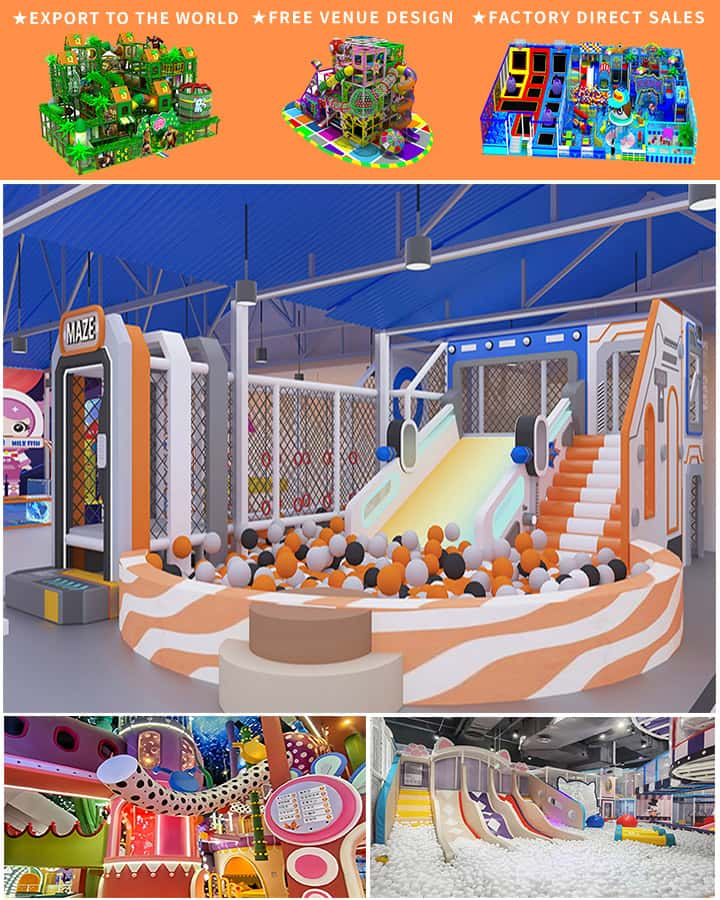Designing an indoor playground that captivates the imagination of children while ensuring their safety requires thoughtful consideration and creativity. The right design can transform a simple recreational space into a wonderland filled with adventure, learning, and fun. Here are some key elements to focus on when planning an innovative kids’ indoor playground design.
1. Safety First
Safety is paramount in any play environment, particularly indoors where supervision may be more challenging. Use soft, shock-absorbent flooring materials to reduce the risk of injuries from falls. Ensure that all equipment is age-appropriate and meets safety standards. Install padded barriers around climbing structures and use non-toxic, child-friendly paints and materials to maintain a healthy environment.
2. Diverse Play Areas
Incorporating a variety of play zones keeps children engaged and caters to different interests and developmental stages. Consider integrating areas such as:
- Physical Activity Zones: Climbing walls, slides, and balance beams promote physical fitness and coordination.
- Creative Corners: Art stations, building blocks, and dress-up areas encourage imaginative play and creativity.
- Educational Spaces: Interactive exhibits, puzzles, and books cater to young minds eager to learn.
- Quiet Zones: Soft seating areas and reading nooks provide a calm retreat for rest and relaxation.

3. Colorful and Engaging Aesthetics
A visually stimulating environment enhances the appeal of an indoor playground. Use bright, cheerful colors that energize and uplift. Incorporate themed designs—such as jungle adventures, underwater worlds, or space explorations—that transport children to magical realms. Thoughtfully placed mirrors and lights can create illusions of larger spaces and add an extra layer of fun.
4. Accessibility and Inclusiveness
Ensure that the playground is accessible to all children, including those with disabilities. Design pathways wide enough for wheelchair access, incorporate sensory play elements for children with autism, and include adaptive equipment for various physical abilities. Inclusive design fosters a sense of belonging and allows every child to enjoy the playground experience.
5. Durable and Easy Maintenance Materials
Given the high traffic in indoor playgrounds, selecting durable materials is crucial. Use sturdy, easy-to-clean surfaces that can withstand wear and tear. Modular and versatile equipment allows for easy reconfiguration and updates, keeping the playground fresh and exciting over time.
6. Natural Elements and Green Features
Integrating natural elements such as indoor plants and water features can create a soothing atmosphere and promote environmental awareness. Biophilic design principles—using nature-inspired patterns, colors, and textures—can enhance the connection between children and the natural world even within an indoor setting.
7. Technology Integration
Modern indoor playgrounds can benefit from smart technology to enhance the experience. Interactive screens, augmented reality games, and digital storytelling can provide educational content and interactive fun. However, ensure that technology is used appropriately and does not replace essential physical play and social interaction.
In conclusion, designing a kids’ indoor playground involves a careful balance of safety, creativity, and inclusivity. By considering these elements, you can create a dynamic and inviting space that nurtures children’s physical, cognitive, and emotional growth. An innovative indoor playground is not just a place for entertainment but a foundation for developing lifelong skills and joyful memories.




